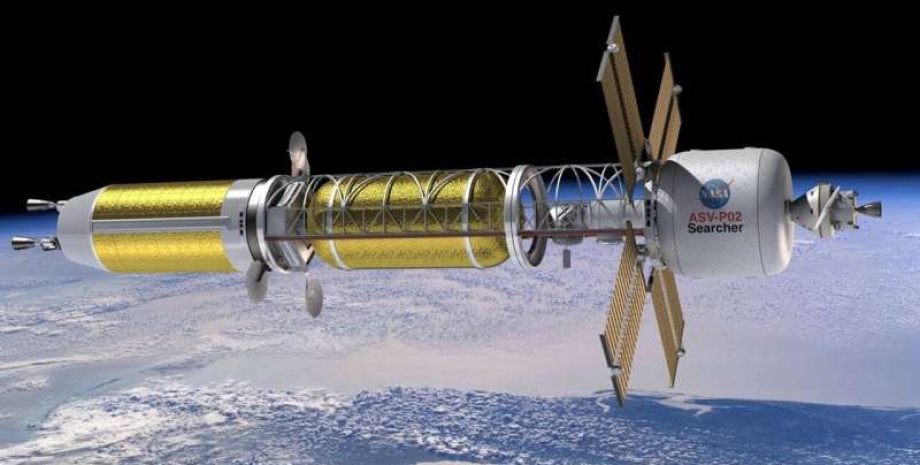
Now NASA, in conjunction with the Department of Prospective Research Projects of the US Department of Defense (Darpa) is engaged in the creation of a nuclear rocket engine that will help rockets 2 times faster to deliver people to the Red Planet. But the development of nuclear reactors for such rockets is a difficult task, writes Phys. In focus. Technology has appeared its Telegram channel.
Subscribe not to miss the latest and most intrusive news from the world of science! Nuclear rocket motors technology is based on the reaction of the nucleus of the atom's nucleus, when a lot of energy is obtained when the nucleus of the nucleus is a neutron. The division reaction has proven itself well in the production of energy to NPPs. The use of the nucleus division reaction to moving space rocket is a faster and more powerful alternative to chemical rockets.
NASA plans to demonstrate the prototype of the first nuclear engine in space in 2027. But this technology is still under development. Dan Kotlyar and his colleagues from Georgia's technology institute, the United States, are now creating models to improve and optimize nuclear rocket engines. According to the scientist, he hopes that these efforts will help to create a nuclear rocket that will be able to deliver people to Mars 2 times faster.
Conventional chemical rocket motors use a chemical reaction with the participation of light fuel, such as hydrogen, and oxidizer. When mixed, these two components flash, causing the fuel to get out of the nozzle very quickly, which drives the rocket. But these missiles should carry oxygen into space, which makes them heavier. Unlike chemical rocket engines, nuclear missile engines are relied on the fuel heating reaction, which is then ejected from the nozzle to create thrust.
In many division reactions, researchers send a neutron to a lighter isotope of uranium, uranium-235. Uranus absorbs a neutron, creating uranium-236. Then Uranus-236 is divided into division products. Nuclear reactors to NPPs use water to slow down neutrons and absorb them, and heat. Water can create steam directly in the active area of the reactor, which drives the turbine to produce electricity.
Kotlyar says that nuclear missile engines work in a similar way, but they use other nuclear fuel, in which more uranium-235. They also work at a much higher temperature, making them extremely powerful and compact. The nuclear engine will very quickly throw away fuel from the nozzle, creating a great thrust. It will allow the rocket to fly faster. Scientists are currently working to use safer fuel in nuclear rocket launchers that contains a lot of uranium, but it is low.
But such fuel contains less material capable of dividing. Therefore, a nuclear engine rocket will have a lot of fuel to carry, so it will be heavier. Kotlyar says that to solve this problem, researchers study special materials that will use fuel more effectively in nuclear reactors. Future nuclear engines for rockets that scientists work on will have to meet certain standards of productivity and safety.
It is necessary to make the engine a small mass, but creates a very large thrust so that it is 2 times faster to get to Mars "before engineers can design an engine that meets all these standards, you need to start with models. These models help researchers to understand the researchers How the engine will cope with launch and stop. But managing such an engine requires a lot of computational power.










All rights reserved IN-Ukraine.info - 2022